Attributeerror: Module ‘Datetime’ Has No Attribute ‘Strptime’
The ‘AttributeError: module ‘datetime’ has no attribute ‘strptime” is a common error message that can occur when working with the ‘datetime’ module in Python. This error typically indicates that the ‘strptime’ attribute is not available or cannot be accessed within the ‘datetime’ module.
What is the ‘AttributeError’ in Python?
In Python, an ‘AttributeError’ is raised when an attribute is not found or cannot be accessed within an object or module. It indicates that the specified attribute does not exist in the given context.
What is the Python module ‘datetime’?
The ‘datetime’ module is a built-in module in Python that provides classes for working with dates, times, and intervals. It allows programmers to manipulate dates and times, perform arithmetic operations on them, and format them as strings.
What is the purpose of the ‘strptime’ attribute in the ‘datetime’ module?
The ‘strptime’ attribute in the ‘datetime’ module is a class method that converts a string representing a date and time into a ‘datetime’ object. It is essentially used for parsing a string and extracting the date and time information from it.
Why does the error message ‘module ‘datetime’ has no attribute ‘strptime” occur?
The error message ‘module ‘datetime’ has no attribute ‘strptime” occurs when the ‘strptime’ attribute is not available or accessible in the ‘datetime’ module. There are a few possible causes for this error:
1. Importing the wrong module: It is possible that the ‘datetime’ module being imported is not the built-in module but a user-defined module, leading to the absence of the ‘strptime’ attribute.
2. Version incompatibility: The ‘strptime’ attribute was introduced in Python 2.2, so if you are using an older version of Python, it might not be available.
What are the possible causes of the ‘AttributeError’ in the ‘datetime’ module?
The possible causes of the ‘AttributeError’ in the ‘datetime’ module are:
1. Importing the wrong module: If you accidentally import a different module with the same name, it may not have the ‘strptime’ attribute.
2. Incompatibility with Python version: Older versions of Python (before 2.2) do not have the ‘strptime’ attribute. Upgrading to a newer version of Python can resolve this issue.
How to troubleshoot the ‘AttributeError’ in the ‘datetime’ module?
To troubleshoot the ‘AttributeError’ in the ‘datetime’ module, you can follow these steps:
1. Verify module name: Ensure that you are importing the correct ‘datetime’ module and not a user-defined or third-party module with the same name.
2. Check Python version: Confirm that you are using a Python version that supports the ‘strptime’ attribute. If not, consider upgrading to a newer Python version.
How to fix the ‘AttributeError’ in the ‘datetime’ module?
To fix the ‘AttributeError’ in the ‘datetime’ module, you can take the following actions:
1. Double-check imports: Make sure you are importing the correct ‘datetime’ module. Use the standard import statement: ‘import datetime’.
2. Upgrade Python version: If you are running an older version of Python, consider upgrading to a newer version that supports the ‘strptime’ attribute.
What are alternative methods to achieve the functionality of ‘strptime’ in the ‘datetime’ module?
If the ‘strptime’ attribute is not available, there are alternative methods to achieve similar functionality in the ‘datetime’ module. Some alternatives include:
1. Using regular expressions: You can use regular expressions to parse the date and time components from a string and then construct a ‘datetime’ object manually.
2. Splitting and converting: Split the string into individual components and convert them to integers. Then use the ‘datetime’ class constructor to create a ‘datetime’ object.
How to avoid the ‘AttributeError: module ‘datetime’ has no attribute ‘strptime” in future code?
To avoid the ‘AttributeError: module ‘datetime’ has no attribute ‘strptime” in future code, follow these best practices:
1. Check Python version: Ensure that you are using a Python version that supports the ‘strptime’ attribute. Consider specifying the minimum required version in your code or documentation.
2. Update imports: Use the standard import statement for the ‘datetime’ module (‘import datetime’) to ensure that the correct module is imported.
In conclusion, the ‘AttributeError: module ‘datetime’ has no attribute ‘strptime” occurs when the ‘strptime’ attribute is not available in the ‘datetime’ module. This Python error can be resolved by verifying the module name, checking Python version compatibility, and using alternative methods to achieve the desired functionality. By following these troubleshooting steps and best practices, you can avoid such errors in future code.
Datetime Module Has No Attribute Strptime
Keywords searched by users: attributeerror: module ‘datetime’ has no attribute ‘strptime’ Python print datetime, Strptime Python, Strptime() argument 1 must be str, not datetime datetime, Python datetime add days, Get now time Python, Python get hour from datetime, Get time from datetime Python, Python datetime to timestamp
Categories: Top 23 Attributeerror: Module ‘Datetime’ Has No Attribute ‘Strptime’
See more here: nhanvietluanvan.com
Python Print Datetime
To start with, let’s first understand the basics of `datetime` module in Python. This module defines several classes, including `datetime`, `date`, `time`, `timedelta`, and `tzinfo`, which all contribute to different aspects of working with dates and times. However, for our purpose of printing datetime values, we will focus primarily on the `datetime` class.
To print datetime values in English, we need to import the `datetime` module and create an instance of the `datetime` class. We can then use the `strftime()` method to format the datetime according to our requirements. The `strftime()` method allows us to specify a format string that determines the representation of the datetime values.
The format string contains various format codes, which are placeholders that will be replaced with the corresponding values from the datetime object. For example, the code `%Y` represents the full four-digit year, `%m` represents the zero-padded month, `%d` represents the zero-padded day, and so on. By combining these format codes, we can construct the desired format for printing the datetime values.
Let’s consider an example to illustrate this. Suppose we have a datetime object representing the current date and time, which can be obtained using the `datetime.now()` function. We can print this datetime value in the format “Month Day, Year” using the format code `%B %d, %Y`. Here, `%B` represents the full month name, `%d` represents the zero-padded day, and `%Y` represents the full four-digit year.
“`python
from datetime import datetime
now = datetime.now()
formatted_datetime = now.strftime(“%B %d, %Y”)
print(formatted_datetime)
“`
This will print the current date and time in the desired format: “Month Day, Year”. For instance, it might output “September 10, 2023”.
In addition to printing the current date and time, we can also specify any other datetime value for printing. For example, if we have a datetime object representing a specific date and time, we can use the `strftime()` method on that object to format and print the datetime value according to our desired format.
Besides the basic date and time formatting, the `datetime` module provides numerous format codes to customize the output further. Some commonly used format codes include `%H` for the hour (24-hour clock), `%I` for the hour (12-hour clock), `%M` for the minute, `%S` for the second, `%p` for the AM/PM designation, and `%A` for the full weekday name. By experimenting with different format codes, we can achieve a wide range of datetime representations.
Now, let’s address some frequently asked questions about printing datetime in English using Python:
**Q1: Can I print datetime values in a different timezone?**
Certainly! The `datetime` module provides the `astimezone()` method to convert datetime values to different timezones. You can use this method to change the timezone of the datetime object before formatting and printing it.
**Q2: How can I print just the date or time without the other components?**
You can achieve this by using separate format codes for the date and time components. For example, `%Y-%m-%d` will print just the date in the format “YYYY-MM-DD”, and `%H:%M:%S` will print just the time in the format “HH:MM:SS”.
**Q3: Can I print the datetime value in a different language?**
Yes, the `datetime` module can be used to print datetime values in various languages. You need to set the appropriate locale for the desired language using the `locale` module in Python.
In conclusion, the `datetime` module in Python provides powerful tools for printing datetime values in English. By utilizing the `strftime()` method and format codes, we can create custom representations of dates and times. Whether it’s printing the current datetime or formatting a specific value, Python offers flexible options to fulfill your requirements. Explore the extensive documentation of the `datetime` module to discover additional capabilities and functionalities it offers.
Strptime Python
## The Syntax and Parameters of strptime()
The syntax for `strptime()` is as follows:
“`python
datetime.datetime.strptime(date_string, format)
“`
Here, `date_string` is the string that we want to parse, and `format` specifies the format that the string follows. The format parameter is crucial for the correct conversion, as the `strptime()` function needs instructions on how to interpret the date and time values in the string.
## Understanding the Format Codes
To understand the format parameter, let’s dive into a few common format codes used in `strptime()`:
– `%d`: Represents the day of the month as a zero-padded decimal number (01 to 31).
– `%m`: Represents the month as a zero-padded decimal number (01 to 12).
– `%Y`: Represents the year with century as a decimal number.
– `%H`: Represents the hour (24-hour clock) as a zero-padded decimal number (00 to 23).
– `%M`: Represents the minute as a zero-padded decimal number (00 to 59).
– `%S`: Represents the second as a zero-padded decimal number (00 to 59).
These are just a few of the many format codes that are available to parse dates and times in different formats. Further information on other codes and their usage can be found in the Python documentation.
## Parsing datetime with strptime()
Now, let’s explore a few examples to better understand how `strptime()` works. Consider the following code snippet:
“`python
import datetime
date_string = “01-12-2022”
date_object = datetime.datetime.strptime(date_string, “%d-%m-%Y”)
print(date_object)
“`
In this example, we are parsing a date string “01-12-2022” with the `%d-%m-%Y` format. Here, `%d` represents the day, `%m` represents the month, and `%Y` represents the year. When we execute this code, the output will be: `2022-12-01 00:00:00`, indicating that the string has been successfully converted into a datetime object.
Similarly, we can parse time strings using `strptime()`. Consider the following example:
“`python
import datetime
time_string = “11:35:00”
time_object = datetime.datetime.strptime(time_string, “%H:%M:%S”)
print(time_object.time())
“`
In this case, we are converting a time string “11:35:00” using the `%H:%M:%S` format, representing hours, minutes, and seconds respectively. The output will be: `11:35:00`, which demonstrates that the string has been converted into a time object.
## Frequently Asked Questions
**Q: Can `strptime()` handle strings in different languages?**
A: Yes, `strptime()` can handle strings in different languages. You just need to provide the appropriate format codes for the respective language.
**Q: What happens if the format code and the format of the string do not match?**
A: If the format code and the string format do not match, a `ValueError` will be raised.
**Q: How can we handle strings with ambiguous formats, such as “03-04-2022”?**
A: By providing a list of possible formats to the `strptime()` function, a developer can handle ambiguous formats. If one format fails, the function will try the next one until a match is found.
**Q: Can `strptime()` handle time zones?**
A: No, `strptime()` does not handle time zones. It converts strings into Python `datetime` and `time` objects, which do not directly deal with time zone information.
**Q: What if the string contains additional information that is not required for parsing?**
A: `strptime()` parses the string as long as the required information (specified by the format) is present. Any additional information in the string is ignored.
With the information provided in this article, readers should now have a solid grasp on how to use the `strptime()` function in Python. Remember to consult the official Python documentation for a comprehensive list of format codes and additional guidance on working with dates and times. Happy coding!
Images related to the topic attributeerror: module ‘datetime’ has no attribute ‘strptime’

Found 48 images related to attributeerror: module ‘datetime’ has no attribute ‘strptime’ theme






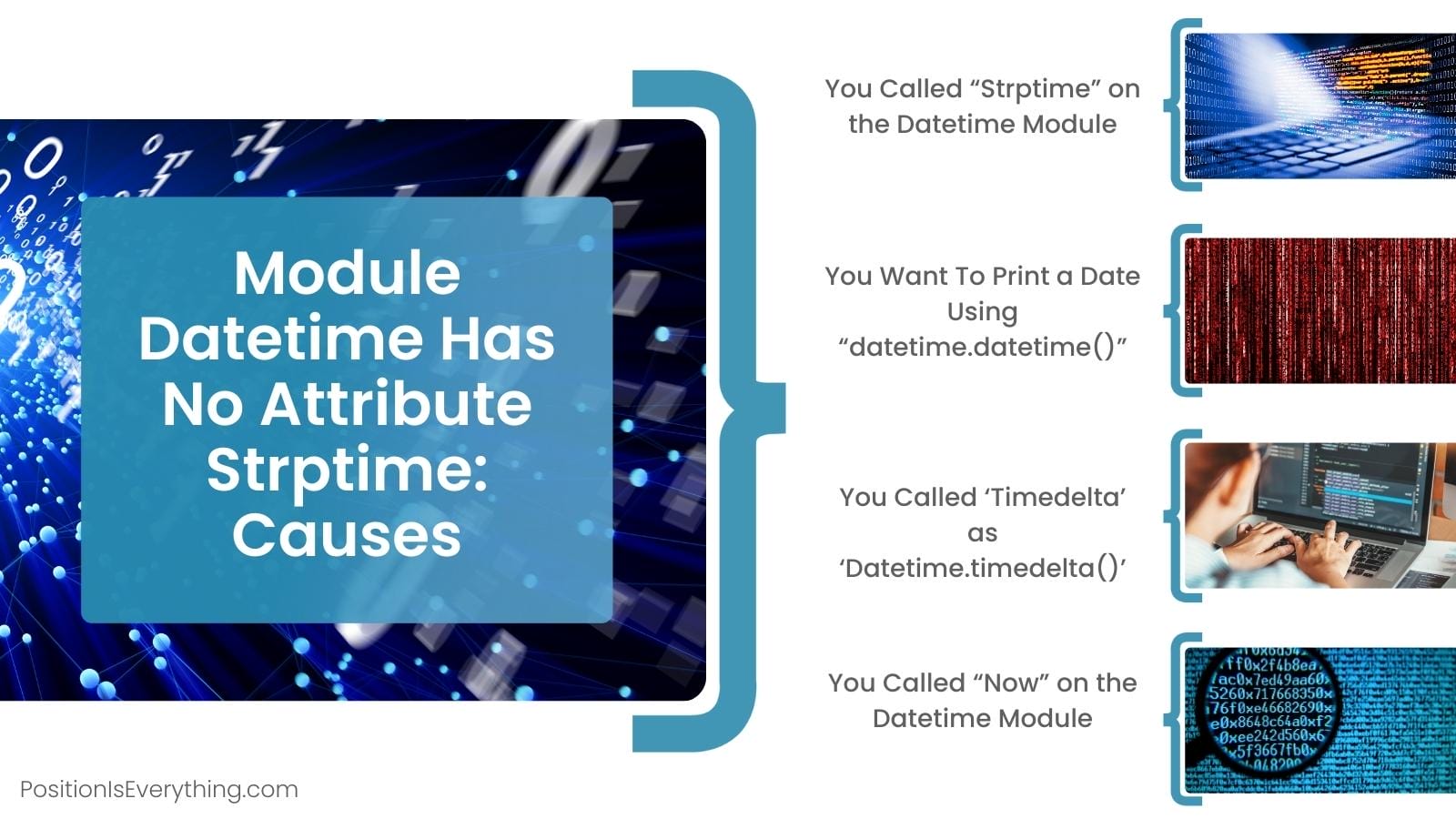

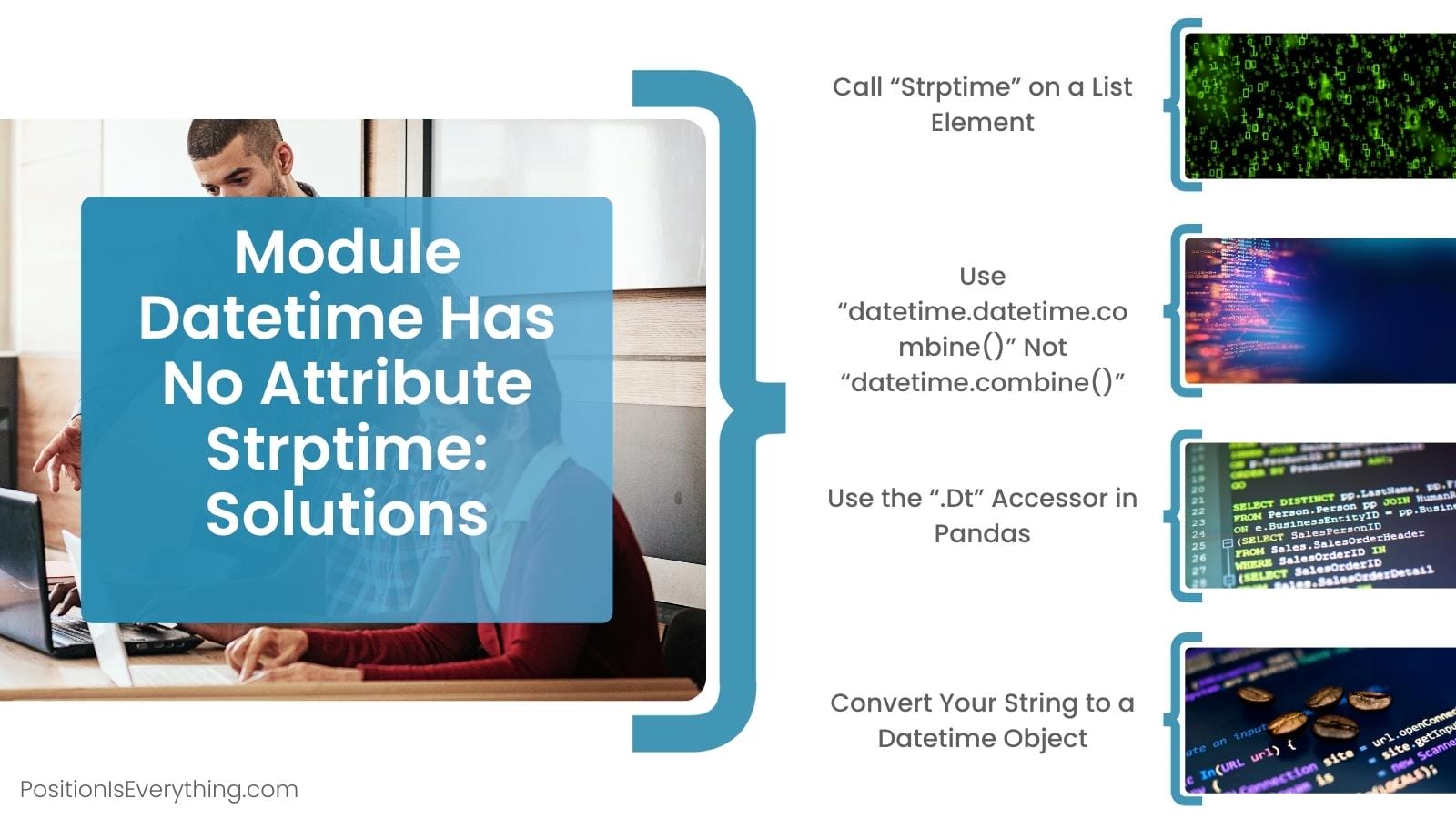











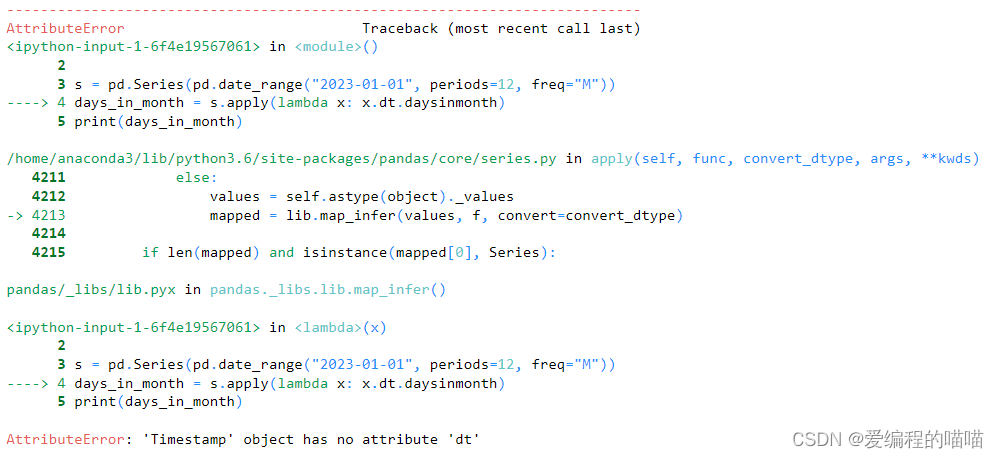
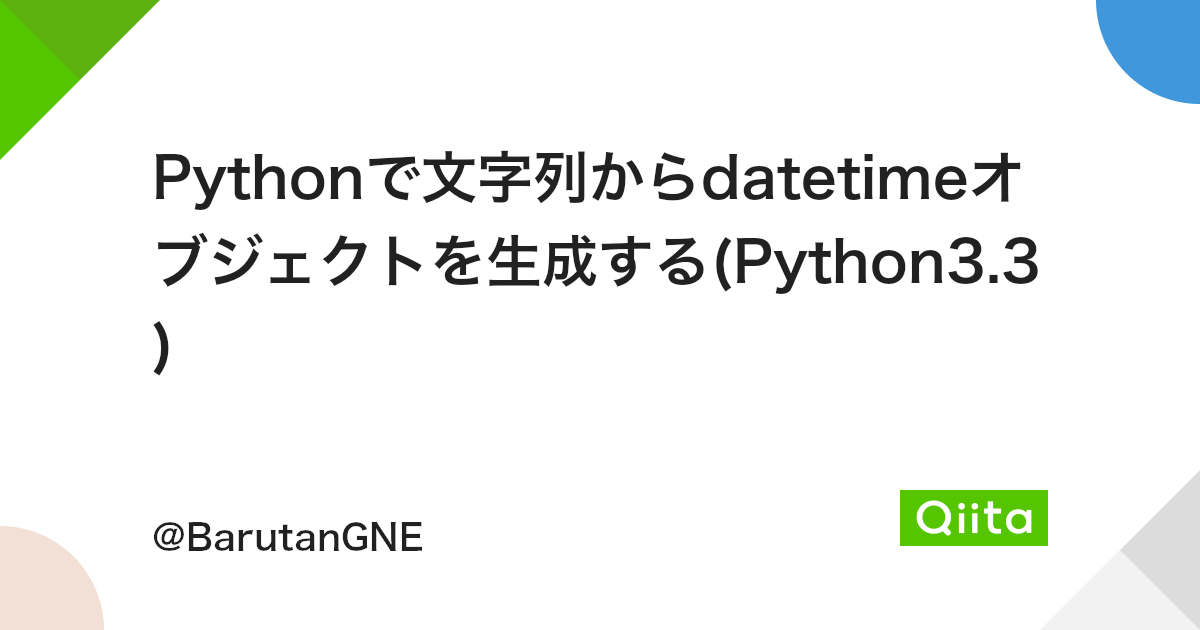

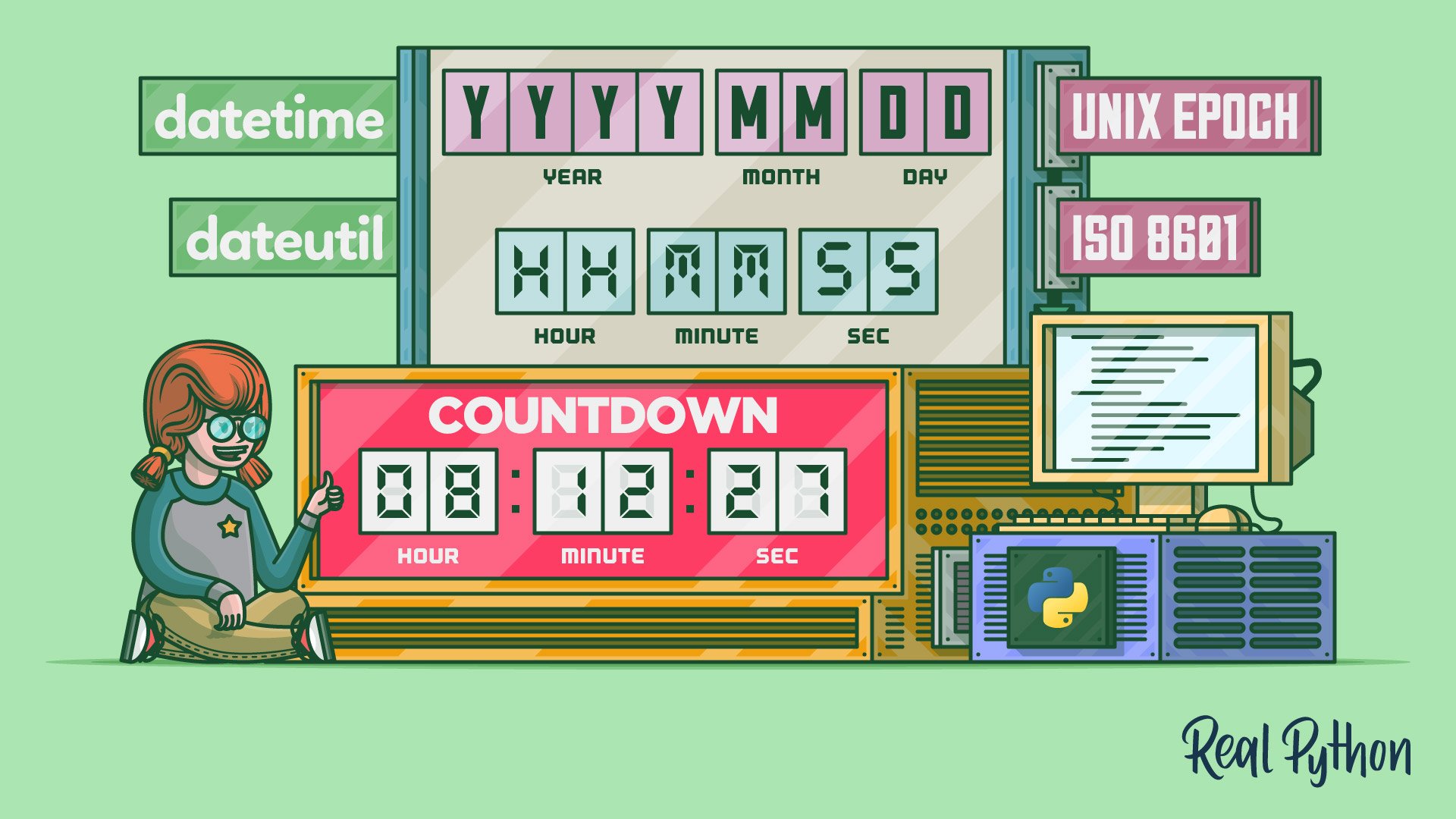















Article link: attributeerror: module ‘datetime’ has no attribute ‘strptime’.
Learn more about the topic attributeerror: module ‘datetime’ has no attribute ‘strptime’.
- AttributeError: ‘datetime’ module has no attribute ‘strptime’
- AttributeError module ‘datetime’ has no attribute ‘strptime’
- module datetime has no attribute strptime ( Solved )
- module ‘datetime’ has no attribute ‘strptime’ – sebhastian
- Fix “AttributeError: module ‘DateTime’ has no attribute ‘strptime …
- module ‘datetime’ has no attribute ‘strptime’ – Statistics Globe
- Module Datetime Has No Attribute Strptime: 8 Solutions for You!
- How to Fix AttributeError: module ‘datetime’ has no attribute …
- ‘module’ object has no attribute ‘strptime’ then how to resolve it?